Mother is a video game series that consists of three role-playing video games: Mother (1989), known as EarthBound Beginnings outside Japan, for the Family Computer; Mother 2 (1994), known as EarthBound outside Japan, for the Super Nintendo Entertainment System; and Mother 3 (2006) for the Game Boy Advance.
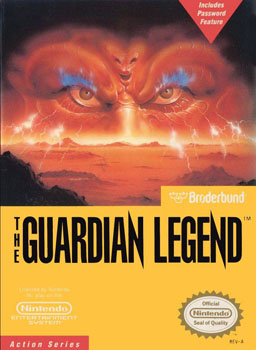
The Guardian Legend is a 1988 hybrid action-adventure/shoot 'em up video game developed by Compile for the Nintendo Entertainment System (NES). It is the sequel to the 1986 MSX game Guardic, and was published and released in Japan by Irem in 1988, in North America by Broderbund in 1989, and in Europe by Nintendo in 1990.

Final Fantasy Legend II, known in Japan as SaGa 2: Hihou Densetsu, is a role-playing video game developed and published by Square for the Game Boy. The second entry in the SaGa series, it was released in 1990 in Japan, and in 1991 in North America. A remake for the Nintendo DS was released in 2009 by Square Enix, remaining exclusive to Japan. The Game Boy version was later ported to the Nintendo Switch and released worldwide by Square Enix in 2020, with later ports to Android, iOS and Microsoft Windows in 2021.

The Legend of Dragoon is a role-playing video game developed by Japan Studio and published by Sony Computer Entertainment for the PlayStation in 1999 in Japan, 2000 in North America, and 2001 in Europe. Set in a high fantasy fictional world called Endiness, the game follows a group of warriors led by the protagonist, Dart, as they attempt to stop the destruction of the world. The player controls a party of 3D character models through pre-rendered, linear environments. Combat uses a combination of turn-based mechanics and real-time commands. Notably, the game includes a quick time event called "addition" during each attack, requiring the player to press a button when two squares converge.

Alien Crush is a pinball video game developed by Compile for the PC Engine/TurboGrafx-16. It was released in 1988. The game is the first installment in the Crush Pinball series. It was followed by three sequels, Devil's Crush, Jaki Crush, and Alien Crush Returns. Alien Crush was later re-released via emulation on the Virtual Console for Wii, 3DS, and Wii U, and for PlayStation 3 through PlayStation Network.
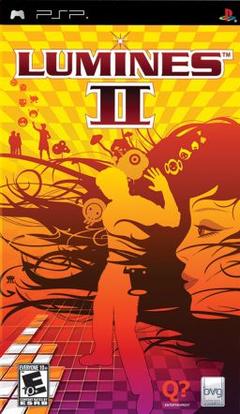
Lumines II is a 2006 puzzle video game developed by Q Entertainment for the PlayStation Portable (PSP). It was released in November 2006 in the PAL region and North America by Buena Vista Games, and in February 2007 in Japan by Bandai Namco Games. The objective of the game is to move and rotate 2×2 blocks to form colored squares of the same color. Points are awarded to the player when the Time Line erases the colored squares. It serves as a direct sequel to Lumines: Puzzle Fusion, expanding on previous modes from its predecessor and adding new modes such as Mission mode, Skin Edit mode, and Sequencer. Lumines II utilizes songs from its predecessor and introduces music videos as background skins from Japanese music artists and mainstream American music artists such as New Order, Missy Elliot, and Beck.
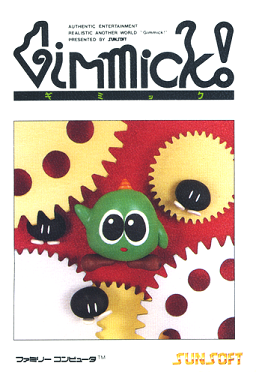
Gimmick!, released in Scandinavia as Mr. Gimmick, is a platform video game developed and published by Sunsoft, and originally released in Japan for the Family Computer in 1992. The story follows a small green yōkai named Yumetaro who was mistakenly gifted as a toy to a young girl. After the girl's toys come to life and whisk the girl away to another dimension, Yumetaro gives chase to save her. Playing as Yumetaro, the player must maneuver through a variety of levels, using the protagonist's star-shooting power to defeat enemies and progress through the game.
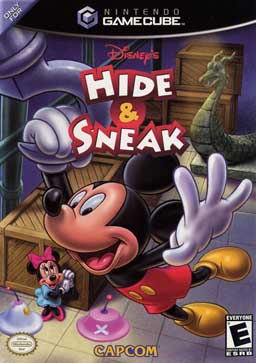
Disney's Hide and Sneak is an action-adventure game released in 2003 by Capcom for the GameCube. It follows Mickey Mouse and his girlfriend Minnie Mouse as they fight their way through an army of UFO-shaped aliens and rescue the other from a mushroom-shaped alien named Lu-Lu.
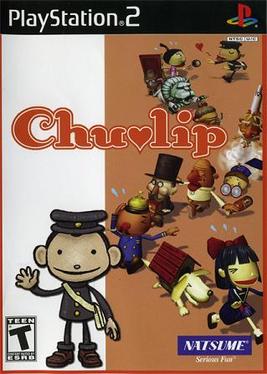
Chulip (チュウリップ), stylized as Chu♥lip, is an adventure/simulation video game developed by Punchline and released on October 3, 2002, in Japan by Victor Interactive Software for the PlayStation 2. After numerous delays, the game was released in North America by Natsume Inc. on February 13, 2007, as a GameStop-exclusive title. It was released on the PlayStation Network as a "PS2 Classic" on December 4, 2012, exclusively in North America.

Love Story, stylized as Ø Story, is a Japanese exclusive adventure interactive movie video game developed by General Entertainment and published by Enix on April 27, 2000. It was the first Enix game published on the PlayStation 2, and was part of the campaign to promote the release of the console in Japan.
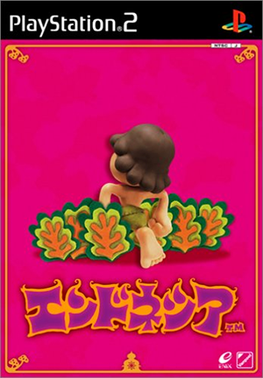
Endonesia (エンドネシア), sometimes Endnesia or Exotica, is an adventure video game developed by Vanpool and published by Enix for the PlayStation 2. The game was developed by Vanpool and published by Enix exclusively in Japan on May 31, 2001. It is Vanpool’s debut game.

Moon: Remix RPG Adventure is a role-playing adventure game developed by Love-de-Lic and first published in 1997 by ASCII Entertainment for the PlayStation in Japan. Moon is set within a fictional role-playing game where "the hero" has wreaked destruction, killing hundreds of creatures and looting homes. The player takes on the role of a supporting character in this world, attempting to undo the damage done by the hero. Moon has been praised by critics for how it parodies the conventions and tropes of role-playing games.
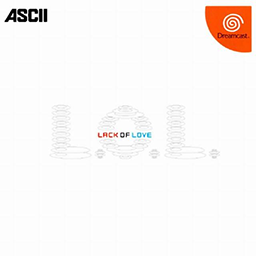
L.O.L: Lack Of Love is an evolutionary life simulation game developed by Love-de-Lic and published by ASCII Corporation for the Sega Dreamcast. The game was released only in Japan on November 2, 2000. The game was never exported to the West but it received a fan translation in 2020.

Irozuki Tingle no Koi no Balloon Trip is an adventure video game developed by Vanpool and published by Nintendo for the Nintendo DS. It is a sequel to the game Freshly-Picked Tingle's Rosy Rupeeland and was released in Japan on August 6, 2009. As with its predecessor, the game focuses on Tingle, a character from The Legend of Zelda series.

Pokémon Mystery Dungeon: Blue Rescue Team and Pokémon Mystery Dungeon: Red Rescue Team are a matched pair of Pokémon video games for the Nintendo DS and Game Boy Advance, respectively. The games were developed by Chunsoft and published by The Pokémon Company and Nintendo. Red Rescue Team was the last Pokémon game released for the Game Boy Advance. The two versions are mostly identical, with Blue Rescue Team taking advantage of the dual-screen features and increased graphical and sound capabilities of the Nintendo DS. The game has six Pokémon exclusive to each version.
Valkyrie Profile or Valkyrie is a series of role-playing video games created by Masaki Norimoto and Yoshiharu Gotanda, primarily developed by tri-Ace and published by Square Enix. The series is notable for featuring elements from Norse mythology.

Spike Chunsoft Co., Ltd. is a Japanese video game development and localization company specializing in role-playing video games, visual novels and adventure games. The company was founded in 1984 as Chunsoft Co., Ltd. and merged with Spike in 2012. It is owned by Dwango.

Steins;Gate Elite is a science fiction visual novel and interactive movie video game, part of the Science Adventure series. It was developed by 5pb. for PlayStation 4, PlayStation Vita, Nintendo Switch, Microsoft Windows and iOS, and was released in September 2018 in Japan and in February 2019 internationally. It is an updated, fully animated remake of the 2009 game Steins;Gate, using footage from the anime adaptation of the original game along with newly produced animation by White Fox.

Super Robot Taisen OG Saga: Endless Frontier Exceed is a crossover role-playing video game developed by Monolith Soft and published by Namco Bandai Games for the Nintendo DS (DS) in 2010. Forming part of the Super Robot Wars series, Endless Frontier Exceed is a sequel to the 2008 DS game Super Robot Taisen OG Saga: Endless Frontier, carrying over its gameplay elements.
















